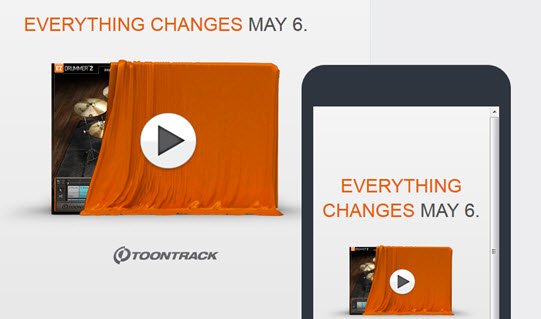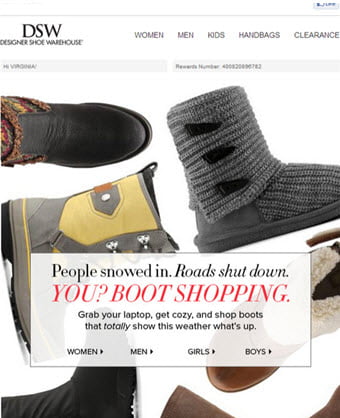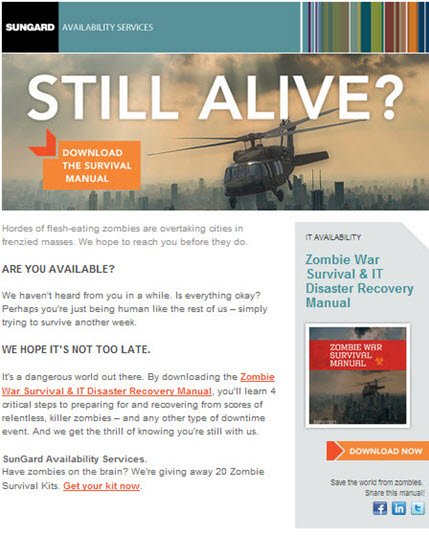Email marketing has come a long way since the early 90’s and the dawn of personal email addresses. For nearly a decade, advertisers had free reign to promote their products and services to a massive online audience. By 1998, the consumer world had gotten wise (not to mention thoroughly annoyed), and they demanded a way to shut off unwelcome email blasts.
That’s when the opt-out mechanism first became a requirement—in the UK. Five years later, the U.S. followed suit by passing the CAN-SPAM Act and establishing a new set of standards for commercial email. Still, people on both sides of the debate (consumer groups and marketers) were unhappy.
What does all this have to do with email marketing in 2014? Context, of course. As we look at the email marketing year in review, we can see how astoundingly improved the channel is, in terms of engagement, design, personalization, and overall user experience.
So here are five examples of awesome email trends and a few memorable messages we loved from January through December.
- Video emails
Back in 2013, MarketingProfs reported that 80 percent of marketers would likely use video in their 2014 emails. Eighty percent! (Fifty-five percent of those surveyed said they’d be “somewhat likely” to use video, while twenty-five percent said “very likely.”)
These are big numbers considering the relative newness and risk of a video email campaign. As HubSpot’s Corey Eridon wisely pointed out, “the idea of embedding a video in email can be a scary proposition. What if the video doesn’t play? What if it’s broken? What if it gets caught in a filter?”
This year was not the year that marketers ironed out all the video email kinks (deliverability, file size, adopting HTML5), but many brands made successful efforts. And some were downright beautiful. Case in point: this homage to the holidays (and to hats) that arrived in an email from Goorin Bros.
- Four-word emails
Way back in 2006, MarketingSherpa deemed super-short email copy a trend. Since then, most advertisers duly tried to keep things brief. They knew about consumer attention spans. About the eye-tracking charts. About the time-constrained realities of the average American.
But “super-short” is a subjective term. Over time, the imperative to pare back got overshadowed by the imperative to engage, and delight, and improve click-through-rates with more links and more descriptions, and more of everything. Well…
Somewhere around 2009, email marketers witnessed a micro-trend—a strategy popularized by I Love Marketing’s Dean Jackson and Joe Blandino—called the nine-word email. Basically it taught advertisers to re-engage cold leads and past clients with messages like, “Are you still interested in blank blank blank blank?” Voila! Nine words.
Pithy emails aren’t so formulaic in 2014. Like the sleeker, sparer web copy we’re now seeing, super-short emails are even smarter… and in fact, even shorter. Check out this bold example (also with video) from Toontrack.

- (External) event-triggered emails
You already know about lifecycle emails, transactional emails, and website behavior-triggered emails, right? Last year, 60 percent of B2C marketers sent order confirmation emails, while about one-fifth sent cart abandonment emails, win-back emails, event countdown emails, and browser history-triggered emails—to name just a few of the various types and figures. Clearly, being on the spot at key moments is an effective email strategy.
The coming months will bring more timely emails and more external event-triggered emails—like messages that speak to audiences experiencing unusual weather, important sports wins, etc. Just look at how DSW (Designer Shoe Warehouse) took advantage of a recent snow storm:

- More sophisticated A/B test emails
Marketers have been using split tests for decades. About 15 years ago, Google started testing its website in A/B format (showing version A to a randomly selected group or version B to another), and an online marketing phenomenon was born. Of course, not everyone was on board with testing from the start. According to 2004 email marketing stats, less than half of all marketers surveyed were even measuring email conversion rates.
Today, a full menu of marketing automation tools makes A/B test emails easier and more insightful than ever before. Advertisers can find solutions for batch email tests and ongoing, triggered campaign tests. Some platforms’ testing capabilities even allow mailers to divide a campaign and test multiple factors—including subject line, from line, images, content, delivery time, and more—using an A/B format.
- Zombie apocalypse emails
Okay, so not every company will be drafting email copy about zombies in 2015, but this one did—and they totally nailed it. Check out this example of pop culture parodying from Sungard Availability Services, a B2B provider of disaster recovery services. Since their work focuses on protecting mission-critical data, applications, and systems, it makes sense to create a disaster-scenario email campaign. And since practically everyone in America is obsessed with zombie apocalypse, the idea is that much more inspired.

Ultimately, sources say the Sungard campaign yielded a 1.2% higher click-to-open rate among director-level recipients, a 3% increase in CTO among president /owner recipients, and a 2% reactivation of inactive contacts.
So why not make it your New Year’s resolution to do something innovative and exciting with your email program in 2015? It could be an offbeat theme, or it could be finding new affiliate email partners…
![]()
